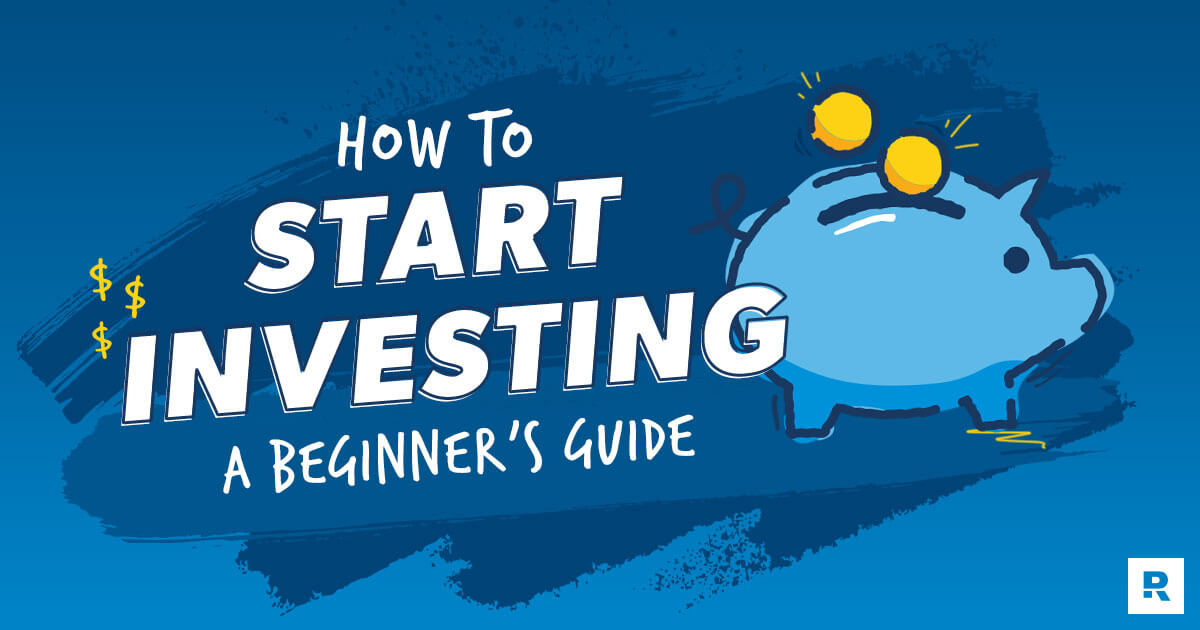To start investing, set clear financial goals and establish a budget. Choose investment options aligning with your risk tolerance.
Investing can seem daunting for beginners, but it doesn’t have to be. By understanding the basics and taking a structured approach, anyone can begin building wealth. Start by setting clear financial goals to know what you’re working towards. Establish a budget to determine how much you can invest regularly.
Research different investment options, such as stocks, bonds, or mutual funds, and choose those that align with your risk tolerance and financial objectives. Diversifying your portfolio can help manage risk and optimize returns. Remember, consistency and patience are key to successful investing. Begin with small, manageable steps and gradually increase your investments as you gain confidence and experience.
Why Invest?
Investing is a powerful tool for growing your wealth over time. It helps you make your money work for you. Understanding why to invest can motivate you to start.
Benefits Of Investing
Investing comes with many benefits that can improve your financial health:
- Wealth Growth: Investing helps your money grow faster than savings.
- Inflation Hedge: Investments can protect against inflation.
- Passive Income: Earn money without actively working.
- Retirement Security: Build a nest egg for your future.
These benefits make investing a smart choice for your financial future.
Common Myths
Many people avoid investing due to common myths:
| Myth | Reality |
|---|---|
| Investing is only for the rich. | Anyone can start with small amounts. |
| Investing is too risky. | There are low-risk options available. |
| You need to be an expert. | Many resources help beginners. |
| Investing takes too much time. | Automation makes it easy. |
Understanding these myths can help you feel more comfortable investing.

Credit: investor.vanguard.com
Setting Financial Goals
Before diving into investments, setting financial goals is crucial. Clear goals guide your investment decisions. They ensure you stay on track to reach your objectives. Let’s explore how to set effective financial goals.
Short-term Vs Long-term Goals
Understanding the difference between short-term and long-term goals helps in planning. Short-term goals are typically achieved within one year. Long-term goals take several years to achieve.
| Goal Type | Time Frame | Examples |
|---|---|---|
| Short-term | Less than 1 year | Emergency fund, vacation, paying off small debts |
| Long-term | 1 year or more | Retirement, buying a house, child’s education |
Smart Goals Framework
Using the SMART goals framework helps in creating achievable goals. SMART stands for Specific, Measurable, Achievable, Relevant, and Time-bound.
- Specific: Define your goal clearly.
- Measurable: Quantify your goal to track progress.
- Achievable: Ensure your goal is realistic.
- Relevant: Align your goal with your overall financial plan.
- Time-bound: Set a deadline for achieving your goal.
Example of a SMART goal: “Save $5,000 for an emergency fund in 12 months.”
Understanding Risk
Investing can be a great way to grow your wealth. But it’s essential to understand the risks involved. This section will help you grasp the concept of risk in investing. We’ll cover the types of risk and your risk tolerance.
Types Of Risk
Different investments carry different types of risk. Knowing these risks helps you make better decisions.
- Market Risk: This is the risk of losing money due to market downturns.
- Credit Risk: The risk that a borrower won’t repay their loan.
- Liquidity Risk: The risk of not being able to sell your investment quickly.
- Interest Rate Risk: This risk affects bonds and loans when interest rates change.
- Inflation Risk: The risk that inflation will reduce the value of your money.
Risk Tolerance
Your risk tolerance is how much risk you can handle. It’s important to know your limits.
Factors influencing your risk tolerance include:
- Age: Younger people can usually take on more risk.
- Financial Goals: Long-term goals may allow for more risk.
- Income: Higher income can support higher risk.
- Experience: More investing experience can lead to higher risk tolerance.
Understanding your risk tolerance helps in choosing the right investments. Always assess your comfort level before making decisions.
Investment Options
Starting your investment journey can seem overwhelming. You have many options to choose from. Each option comes with its own risks and rewards. Understanding these options can help you make better decisions.
Stocks
Stocks represent ownership in a company. When you buy a stock, you own a piece of that company. Stocks can be volatile, which means their prices can change quickly. But they also have the potential for high returns.
Here are some benefits of investing in stocks:
- High return potential
- Ownership in a company
- Dividends (some stocks pay you money)
Stocks are great for long-term growth. They are less predictable in the short term.
Bonds
Bonds are loans you give to companies or governments. In return, they pay you interest. Bonds are generally safer than stocks, but they also offer lower returns.
Some advantages of bonds include:
- Regular interest payments
- Lower risk than stocks
- Stability in your portfolio
Bonds are good for those seeking steady income. They are less volatile than stocks.
Mutual Funds
Mutual funds pool money from many investors. A professional manager invests this money in stocks, bonds, or other assets. This provides diversification, which spreads risk.
Benefits of mutual funds include:
- Diversification (your money is spread out)
- Professional management
- Accessible for beginners
Mutual funds are ideal for those who want a simple investment option.
Etfs
ETFs (Exchange-Traded Funds) are similar to mutual funds. They hold a mix of stocks, bonds, or other assets. But unlike mutual funds, ETFs trade on stock exchanges. You can buy and sell them like stocks.
Advantages of ETFs include:
- Diversification
- Lower fees than mutual funds
- Flexibility in trading
ETFs are good for investors who want both diversification and flexibility.
Building A Portfolio
Starting your investment journey can be exciting and overwhelming. Building a portfolio is the first step. A well-constructed portfolio helps you manage risk and achieve your financial goals.
Diversification
Diversification means spreading your investments across different assets. This strategy reduces risk. If one asset fails, others may perform well.
- Stocks: Invest in various industries like tech, health, and finance.
- Bonds: Include government and corporate bonds in your portfolio.
- Real Estate: Consider real estate investment trusts (REITs) for property exposure.
- Commodities: Gold, silver, and oil are examples of commodity investments.
Diversification ensures your portfolio is not reliant on a single investment.
Asset Allocation
Asset allocation is dividing your investments among different categories. These categories include stocks, bonds, and cash. This strategy balances risk and reward based on your goals.
| Age | Stocks | Bonds | Cash |
|---|---|---|---|
| 20-30 | 70% | 20% | 10% |
| 31-40 | 60% | 30% | 10% |
| 41-50 | 50% | 40% | 10% |
Adjust your asset allocation based on your age and risk tolerance. Younger investors can take more risks. Older investors should aim for stability.
Remember, a balanced portfolio is key to successful investing.
Choosing A Brokerage
Choosing the right brokerage is crucial for beginner investors. The right brokerage can help you manage your investments effectively. Let’s break down the key factors in choosing a brokerage.
Full-service Vs Discount Brokers
Full-service brokers offer personalized advice and a range of services. They can provide investment strategies, retirement planning, and tax advice. These brokers charge higher fees due to their comprehensive services.
Discount brokers offer fewer services but charge lower fees. They provide essential tools for trading and basic customer support. Discount brokers are suitable for self-directed investors.
| Feature | Full-Service Brokers | Discount Brokers |
|---|---|---|
| Fees | High | Low |
| Services | Comprehensive | Basic |
| Best For | Personalized Advice | Self-directed Investors |
Online Platforms
Online platforms have revolutionized investing. They offer easy access to markets and tools. You can trade stocks, bonds, and ETFs with a few clicks.
Here are some benefits of using online platforms:
- Convenience: Trade from anywhere, anytime.
- Lower Fees: Many platforms offer competitive pricing.
- Research Tools: Access to charts, news, and analysis.
- User-friendly: Intuitive interfaces for beginners.
Some popular online platforms include:
- Robinhood
- ETRADE
- TD Ameritrade
- Fidelity
Choosing the right brokerage involves understanding your needs and preferences. Consider fees, services, and platform usability. Start with a brokerage that aligns with your investment goals.
Starting With Small Amounts
Starting with small amounts is a smart way to begin investing. You don’t need a lot of money to start. Small investments can grow over time. Here are some simple ways to begin with small amounts.
Micro-investing
Micro-investing allows you to invest tiny amounts of money. Many apps help you with this. You can invest the spare change from your purchases. These apps round up your spending to the nearest dollar. The extra cents get invested in stocks or bonds.
Here’s an example:
| Purchase Amount | Rounded Up Amount | Investment |
|---|---|---|
| $2.75 | $3.00 | $0.25 |
| $5.10 | $6.00 | $0.90 |
Over time, these small investments add up. You can start investing without noticing the money leaving your pocket.
Robo-advisors
Robo-advisors are automated investment platforms. They make investing easy for beginners. You start by answering a few questions. These questions help determine your risk level and goals.
Steps to start with a robo-advisor:
- Sign up on a robo-advisor platform.
- Answer a few questions about your finances.
- Deposit a small amount of money.
- Let the robo-advisor invest for you.
Robo-advisors use algorithms to manage your portfolio. They charge lower fees than human advisors. This makes them a great choice for small investors.
With micro-investing and robo-advisors, starting small is easy and effective. These methods allow you to build wealth gradually.

Credit: www.ramseysolutions.com
Monitoring Investments
Starting your investment journey is exciting. But, keeping track of your investments is crucial. Monitoring investments helps ensure that your money works for you effectively. Let’s explore how to monitor your investments effectively.
Performance Tracking
Performance tracking means checking how well your investments are doing. It’s essential to know if your investments are growing or not. Use simple tools like spreadsheets or online apps to track performance.
| Investment Type | Initial Amount | Current Value | Percentage Change |
|---|---|---|---|
| Stocks | $1,000 | $1,200 | 20% |
| Bonds | $500 | $550 | 10% |
Keep a record of your investments in a table. Update it regularly to see trends over time. This helps you make informed decisions.
Rebalancing
Rebalancing means adjusting your investments to maintain your desired risk level. For example, if stocks grow faster than bonds, your portfolio may become riskier. Rebalancing helps keep the balance in check.
- Review your asset allocation quarterly.
- Sell some high-performing assets.
- Buy more of the underperforming assets.
Rebalancing ensures that you stick to your investment strategy. It helps manage risks and keeps your portfolio aligned with your goals.

Credit: stockpe.app
Conclusion
Starting to invest can seem daunting, but this guide has simplified the process. Take small steps and stay informed. Diversify your portfolio to minimize risks. Remember, consistency and patience are key to successful investing. Happy investing!

